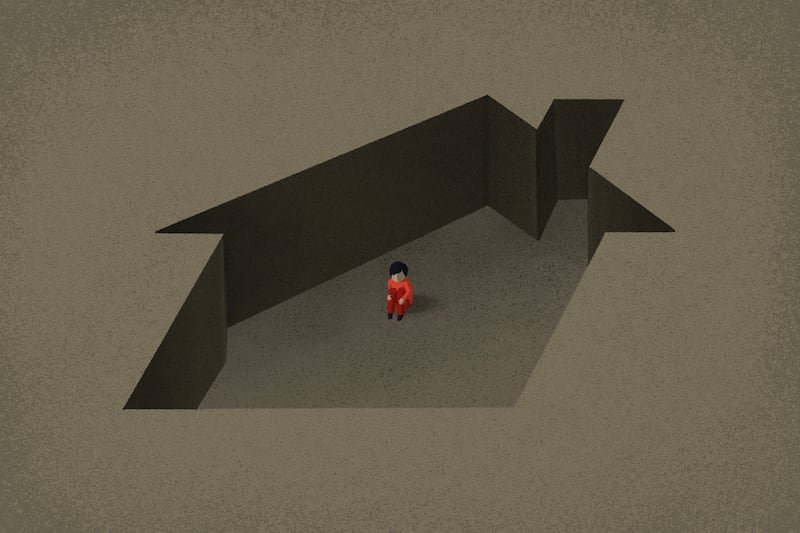“The apple doesn’t fall far from the tree.” In an interview several years ago, Amelia Franck Meyer, the founder and CEO of a nonprofit called Alia (which advocates for more kinship placements for foster kids) told me that she hears that phrase often.
She said, “If you have parents who have harmed (a child), we presume the whole bunch of apples is spoiled” — that is, their whole extended family is going to have problems that will preclude them from caring for a child. But given that every human being on the planet could have as many as 300 relatives, she asks, how can we write off all of them?
The answer, of course, is that we should not. And when possible, if we have to remove a child from a home because it’s unsafe, it would be better to place them with a relative they know and trust.
But to say that a child who was raised by an abusive mother who engaged in drug abuse or criminal activity might be more likely to have a grandmother who engaged in the same kind of behavior is also reasonable. And we should carefully vet kinship placements, and not just assume that they are always going to be appropriate because the person shares DNA with the child.
Even that observation is wrongheaded and downright offensive to many advocates these days. An article published in Children’s Bureau Express — a newsletter published by the Administration for Children and Families — said that, “The common notion that the ‘apple does not fall far from the tree’ is an example of systemic bias.”
The author connects this idea to race and class, arguing that this construct does more to harm poor people and Black people. But there is no reason to believe that family dysfunction doesn’t spread among rich white people in the same way. Alcoholism, domestic abuse, harsh discipline of children — all these are behaviors that can be learned by watching family members.
Are we allowed to say that? At a recent meeting on the subject of kinship care hosted by the federal Children’s Bureau, I also heard people explain how the use of the phrase “the apple doesn’t fall far from the tree” is racist. But there was another phrase thrown around during the day that seemed quite similar — ”intergenerational trauma.” Many of the panelists — both those with “lived experience” and the experts in the field of child welfare — described how trauma experienced in childhood is passed on by parents and then passed down again to children.
In an essay in Commentary magazine, my colleague Christine Rosen traces the origins and popularity of this idea. In his runaway bestseller, “The Body Keeps the Score: Brain, Mind, and Body in the Healing of Trauma,” psychiatrist Bessel van der Kolk argues that an individual’s genes can be changed because of trauma they’ve experienced and that those changes can be passed on to future generations.
But as Rosen notes, there is plenty of reason to doubt the science of epigenetics, not least of which is the fact that it has been debunked before. “Epigenetics exists in the discredited shadow of Lamarckism, the evolutionary theory first developed by 19th-century French naturalist Jean Baptist Lamarck (who) argued for the inheritance of acquired characteristics (e.g., the giraffe’s neck is long because earlier generations had to stretch to reach the leaves of tall trees).”
But as Rosen notes, the theory of epigenetics and intergenerational trauma have clearly resonated with the American public. “The idea that trauma is not only widespread but deeply rooted — and passed on — in people’s bodies from generation to generation has captured the American imagination at a time when victimhood is already a dominating force in the culture,” she wrote.
The way the phrase is used regarding entire racial and ethnic communities is odd — both assigning collective blame and also absolving communities entirely of the responsibility for their problems. Take, for instance, the way intergenerational, or historical, trauma is used to describe Native American communities.
In an article in the journal Daedalus, Joseph P. Gone, a professor at Harvard, explains: “Indigenous adoption and promotion of historical trauma affords an explanatory account for community mental health inequities that designates the historical legacies of colonization as central for understanding contemporary Indigenous suffering.”
Others have made the point before, but if the abuse of our ancestors is cause enough for modern trauma, then there are plenty of other groups — Jews, for example — who should be suffering more.
So what is the difference between the apple tree conception and intergenerational trauma? Both suggest that we are scarred by the negative aspects of our upbringing. Both suggest something inevitable about our passing on those dysfunctional behaviors to our children. But perhaps because the latter has a quasi-biological explanation people are not actually responsible for the consequences of this trauma transfer, or stopping it before it reaches the next generation.
No man is an island, and every adult is in some way the product of his or her upbringing. Some will have a harder time trying to stop the dysfunction or even violence that plagued their lives, before they pass it on to their own children. We must be realistic about these challenges — understanding the risks of keeping children in certain environments — even as we maintain the hope that each person can leave the trauma behind.
Naomi Schaefer Riley is a senior fellow at the American Enterprise Institute, a Deseret News contributor and the author of “No Way to Treat a Child: How the Foster Care System, Family Courts, and Racial Activists Are Wrecking Young Lives,” among other books.


